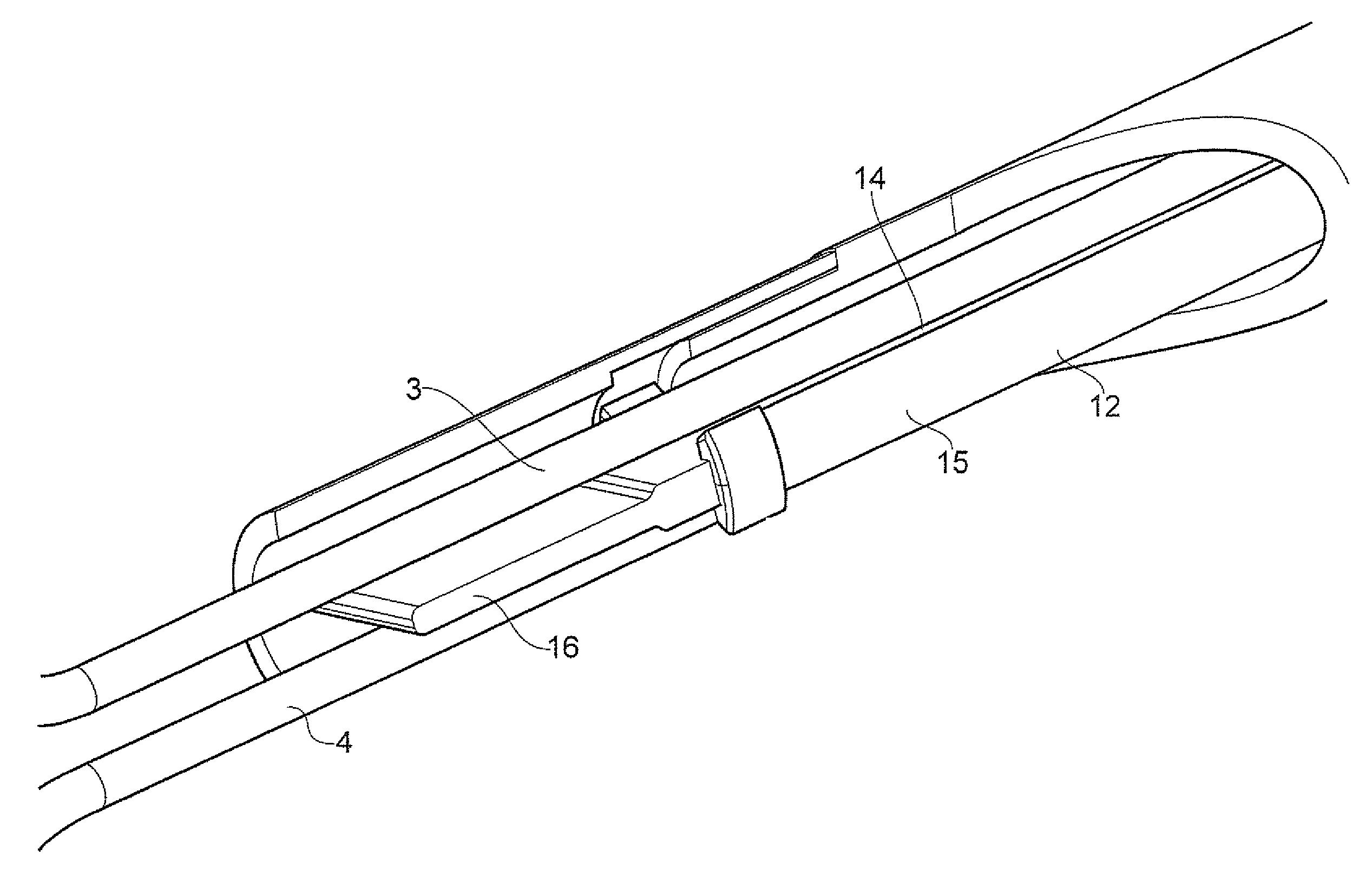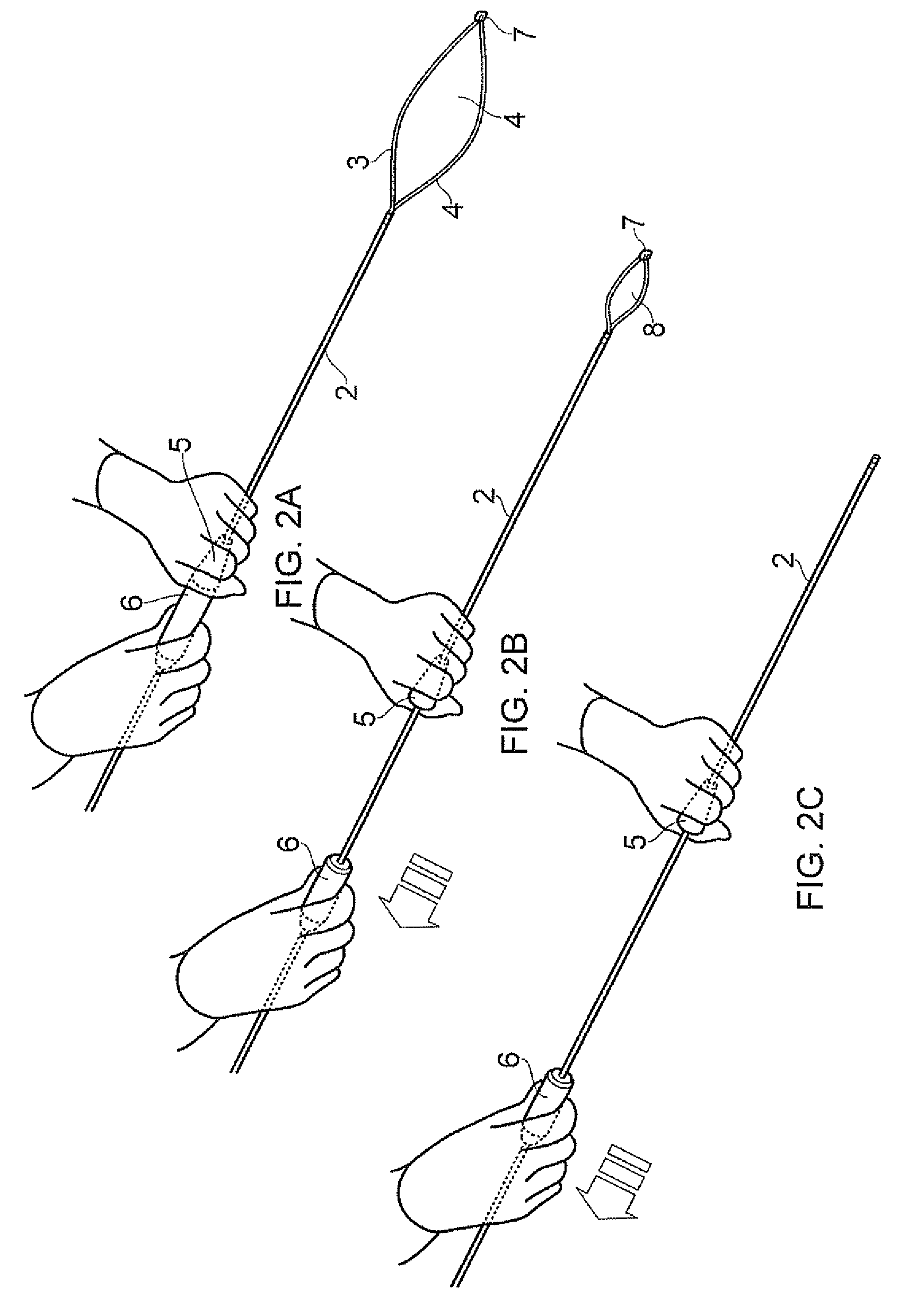Electrosurgical instrument
a surgical instrument and electrode technology, applied in the field of electrosurgical instruments, can solve the problems of shortening the wires, unable to complete the surgical procedure, and difficulty in tissue cutting,
- Summary
- Abstract
- Description
- Claims
- Application Information
AI Technical Summary
Benefits of technology
Problems solved by technology
Method used
Image
Examples
Embodiment Construction
[0042]Referring to FIGS. 1 & 2, a bipolar snare is shown generally at 1, and comprises an elongated tubular sheath 2 containing first and second wires 3 and 4. A first handle 5 is provided for maneuvering the sheath 2, and a second handle 6 is attached to the wires 3&4, such that longitudinal movement of the second handle 6 with respect the first handle 5 causes the wires 3&4 to be moved longitudinally with respect to the sheath 2, as shown in FIGS. 2A, 2B &2C.
[0043]An insulating connector 7 of a ceramic material joins the distal end of the first and second wires 3&4 one to the other, so as to form a loop shown generally at 8. The wires 3&4 are covered with an insulating covering 9 along the majority of their length, but are left exposed as shown at 10 and 11 towards their distal end.
[0044]When fully extended, the wires form a hexagonal shape as shown in FIGS. 1 & 3. This allows the loop 8 to be placed over a piece of tissue to be resected, such as a polyp or other small tissue mass...
PUM
 Login to View More
Login to View More Abstract
Description
Claims
Application Information
 Login to View More
Login to View More - R&D
- Intellectual Property
- Life Sciences
- Materials
- Tech Scout
- Unparalleled Data Quality
- Higher Quality Content
- 60% Fewer Hallucinations
Browse by: Latest US Patents, China's latest patents, Technical Efficacy Thesaurus, Application Domain, Technology Topic, Popular Technical Reports.
© 2025 PatSnap. All rights reserved.Legal|Privacy policy|Modern Slavery Act Transparency Statement|Sitemap|About US| Contact US: help@patsnap.com



